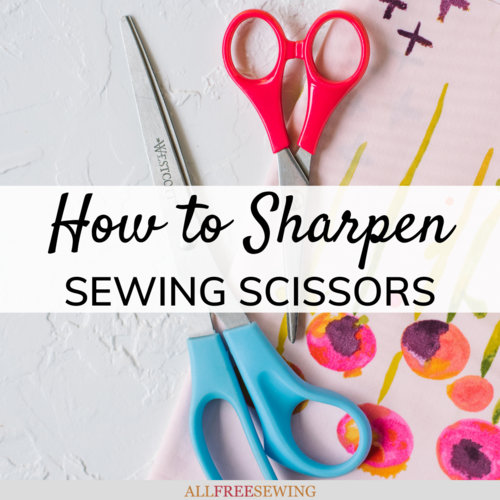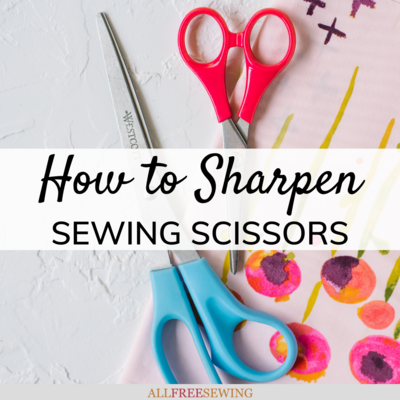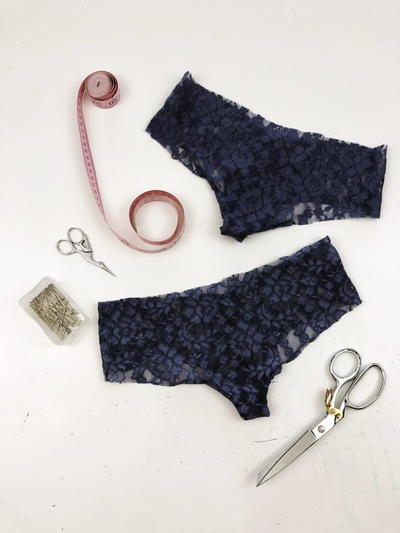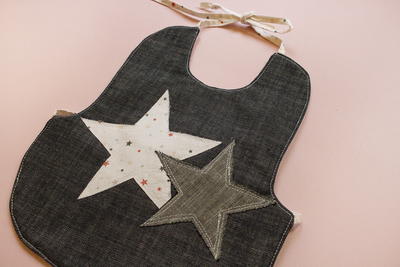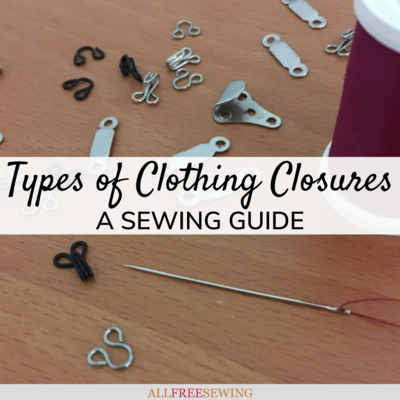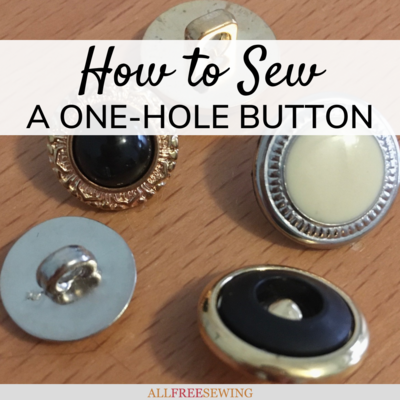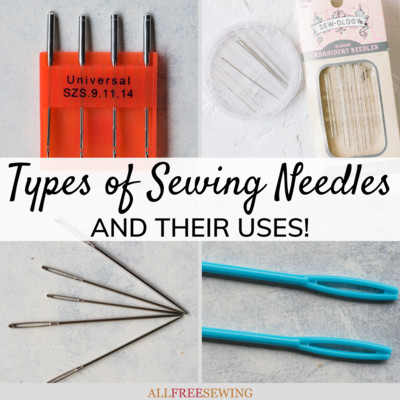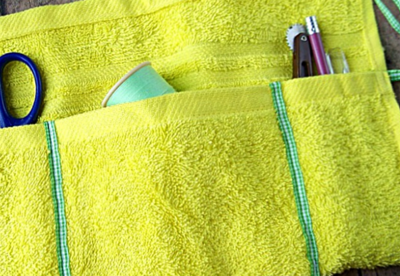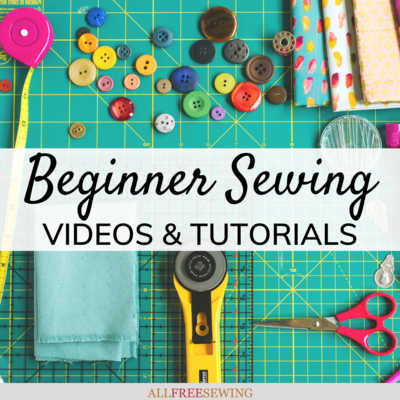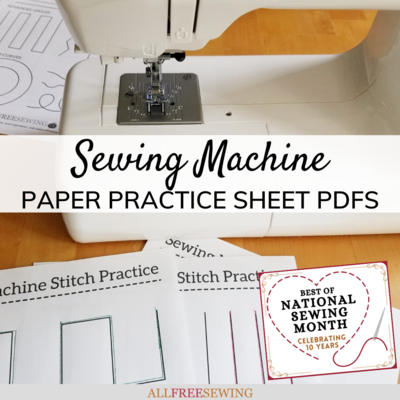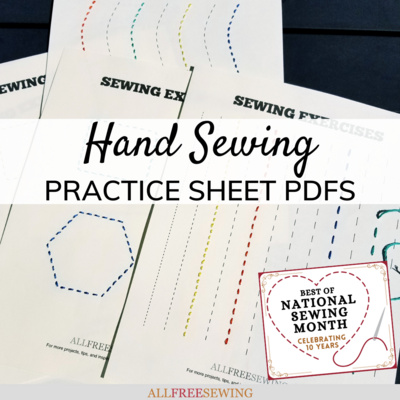How to Sharpen Sewing Scissors
You'll never have to buy new sewing shears again after you learn these seven simple ways to sharpen sewing scissors at home.
When you’re making a project in your sewing room, you don’t want to wear your hand out every time you try to cut a piece of fabric.
If you find yourself having to cut pieces over and over again just to get a decent snip, or if your cut edges are frayed and ragged after you use your fabric shears, then your cutting tools may need a sharper edge.
There’s no need to throw out dull sewing scissors, though! Learn how to sharpen sewing scissors at home so that your cutting tool keeps your sewing projects painless and precise!
You don’t have to be a sewing expert to learn this simple skill. Give any worn sewing blade a razor-sharp edge by using common household materials!
If you have sandpaper, aluminum foil, steel wool soap pads, a screwdriver, or even an old mason jar, you can sharpen sewing scissors with ease.
Want to use a specialized sharpening tool? No problem! Sharpening stones and scissor sharpeners will make your fabric cutting just as breezy, and you can reuse them whenever your blades need a pick-me-up.
Get a cutting edge that’s as sharp as the rest of your sewing senses, and you’ll never settle for dull blades ever again!
Sign Up For More Free Patterns >>>
How to Sharpen Sewing Scissors: 7 Methods
With all of these options for optimizing your cutting experience, why wait to make your sewing as easy as possible? These tutorials on how to sharpen sewing scissors will teach you how to give your blades a keen edge in the way that best suits you.
Curious about the distinction between fabric and paper scissors? Learn everything you need to know in this guide, What's the Difference Between Fabric Scissors and Paper Scissors?
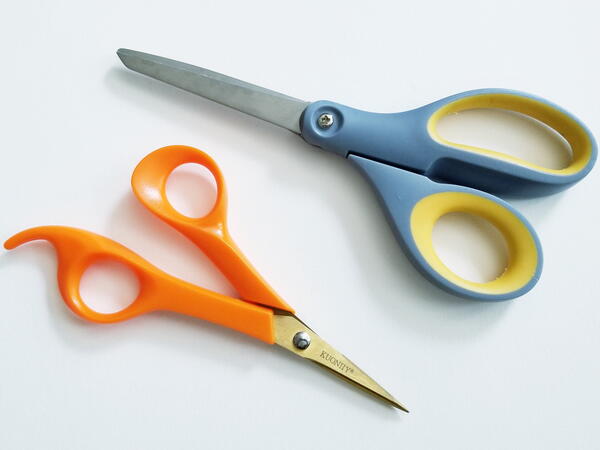
Table of Contents
How to Sharpen Scissors with Sandpaper
How to Sharpen Scissors with Aluminum Foil
How to Sharpen Scissors with a Steel Wool Soap Pad
How to Sharpen Scissors with a Mason Jar
How to Sharpen Scissors with a Screwdriver
How to Sharpen Scissors with a Scissor Sharpener
How to Sharpen Scissors with a Sharpening Stone
Note: Always wipe down your scissors with a cloth or paper towel after performing each of these sharpening techniques. This will remove any slivers or burrs of metal that have been shaved off.
How to Sharpen Scissors with Sandpaper
- Get a piece of fine-grit sandpaper. According to wikiHow’s article, How to Sharpen Scissors, 150-200 grit should work fine, though you can opt for a finer grit (a higher number) if your blades are not as dull.
- Fold your sandpaper in half with the rough sides facing out.
- Cut several times through the folded sandpaper with your dull sewing scissors, making sure that both blades fully make contact with the sandpaper.
- After cutting about 10 notches, test your scissors on a piece of scrap fabric to see if they are sharp enough. If they are not, cut more notches in the sandpaper until they have reached the desired level of sharpness.
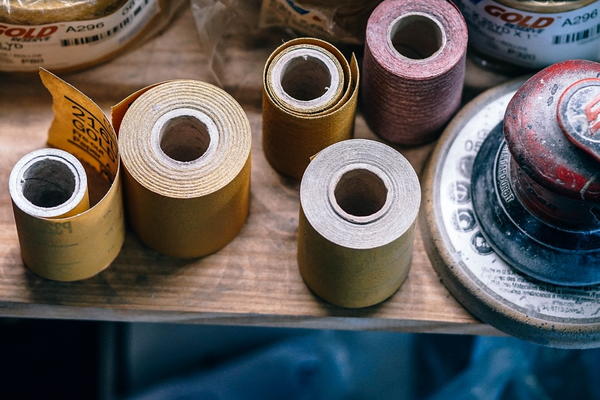
How to Sharpen Scissors with Aluminum Foil
Note: According to Vicky Myers in her SoSewEasy article How to Sharpen Scissors and Other Sewing Tools, this process can also be used to sharpen a rotary cutter by placing the folded aluminum foil on a cutting mat and cutting strips through it with the rotary cutter.
Instructions:
- In order to sharpen scissors with foil, fold a 10’’ x 10’’ piece of aluminum foil in half about three times lengthwise. This should yield six layers of aluminum foil in a hot dog-like shape.
- Cut several times through the folded aluminum foil with your dull sewing scissors, making sure that both blades fully make contact with the aluminum foil.
- After cutting strips through the entire piece of aluminum foil, test your scissors on a piece of scrap fabric to see if they are sharp enough.
If they are not, use another folded piece of aluminum foil and repeat Step 2 until they have reached the desired level of sharpness.
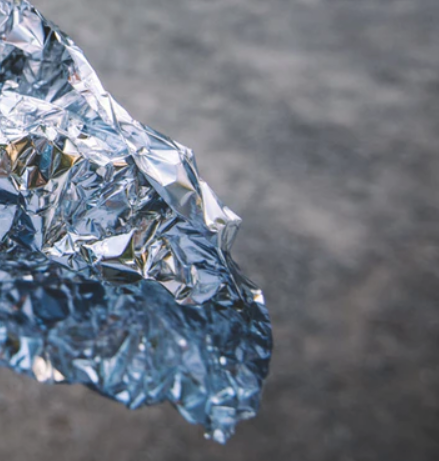
How to Sharpen Scissors with a Steel Wool Soap Pad
- Cut several notches in a steel wool soap pad, making sure that both blades fully make contact with the pad.
- Rinse the scissors' blades.
- Test your scissors on a piece of scrap fabric to see if they are sharp enough. If they are not, cut more notches into the pad until they have reached the desired level of sharpness.
How to Sharpen Scissors with a Mason Jar
Note: If you use this method, select a mason jar that you don’t care about, as it may leave permanent scratches on its surface.
Instructions:
- As outlined in Mrs. Mary Elayne Russell’s Curbly article How To Sharpen Scissors Yourself, open the dull sewing scissors all the way and position the body of the mason jar between the blades.
- Pretend that you are trying to cut through the mason jar, and move the scissors outwards from the jar as you close them.
- Repeat Step 2 until your blades are sharp enough for your liking.
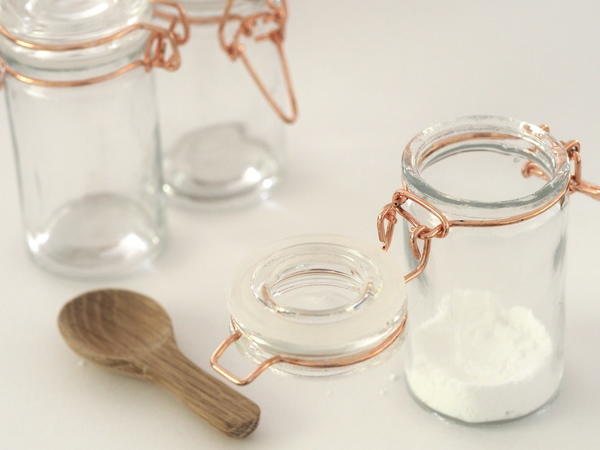
How to Sharpen Scissors with a Screwdriver
- The wikiHow article, How to Sharpen Scissors, explains how you should open the dull sewing scissors all the way and position the shaft of the screwdriver between the blades.
- Pretend that you are trying to cut through the screwdriver, and move the screwdriver away from the scissors as you close them.
- Repeat Step 2 until your blades are sharp enough for your liking.
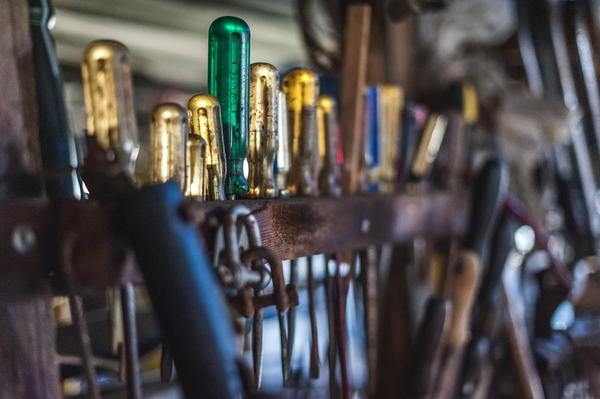
How to Sharpen Scissors with a Scissor Sharpener
- Follow the instructions of your particular store-bought scissor sharpener, as they may differ based on brand and model.
- However, most have you position the beveled, or sloped, edge of the scissors between the blades of the tool. Then you should pass the blades through the tool from base to tip.
How to Sharpen Scissors with a Sharpening Stone
Notes:
• Follow the care and use instructions of your sharpening stone, as they may vary from brand to brand. These may include soaking it in the machine or honing oil before use and storing it in a particular way.
• Also, most sharpening stones have two sides: a coarse side and a fine side. Depending on how dull your scissors are, you may need to start with the coarse side before using the fine side for touch-ups and finishing.
Instructions:
- If possible, remove the screw on your sewing scissors and separate the blades.
- Place the beveled, or sloped, edge of one blade so that it lays flat on the surface of the sharpening stone.
Holding the bottom edge of the blade, slide the blade across the stone away from you from the base to the tip, making sure that the edge of the blade stays flat the whole time.
- Repeat Step 2 until your blade is sufficiently sharp.
- Repeat Steps 2–3 for the other blade.
Pin This How to Sharpen Sewing Scissors Article on Pinterest!
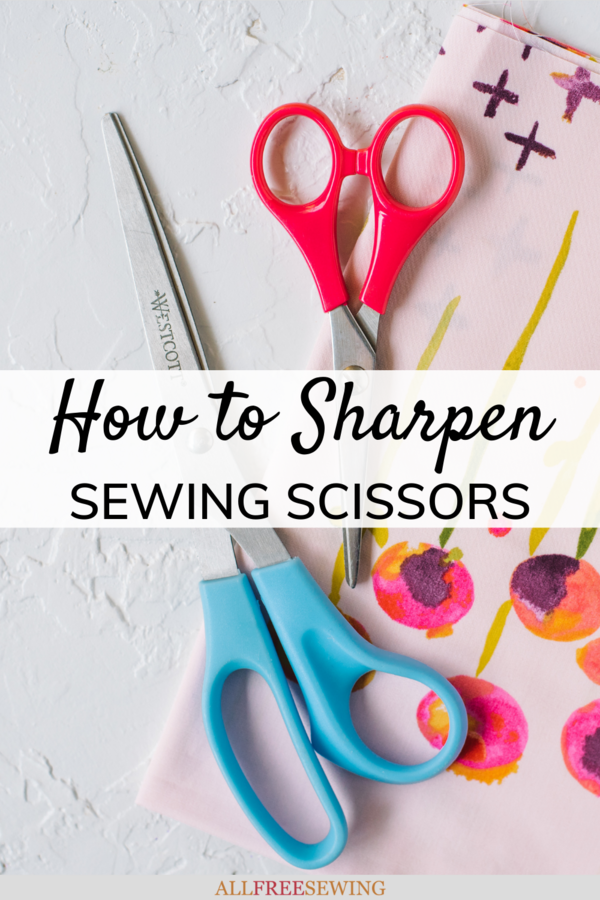
Want More?
What's the Difference Between Fabric Scissors and Paper Scissors? >>
How often do you replace your sewing scissors?
Let us know in the comments!
Lynn K
Nov 27, 2018
There is nothing worse in the sewing realm than trying to cut fabric with dull or blunt scissors and it was always such a chore to take my scissors to be sharpened so I started buying cheap scissors so that I didn't mind throwing them away when they got blunt. Now I can sharpen my own and start using my favorite old scissors again - YAY!!!
Weberme
Sep 30, 2018
My scissors need sharping right now and I hate buying new ones because they are so expensive so I am going to try the sandpaper or aluminum foil but I like the screwdriver and all the other ideas to. So if you do not have one thing it gives you options.
IreneMachine
Aug 05, 2018
This is such a handy guide! Ive always been tempted to just throw out dull pairs of scissors, and it can get pricey real quick. I love that this tutorial gives options for sewists with all different tools at their disposal, from common sandpaper to specialized scissor sharpeners. DEFINITELY printing out a copy of this for my sewing binder!
Report Inappropriate Comment
Are you sure you would like to report this comment? It will be flagged for our moderators to take action.
Thank you for taking the time to improve the content on our site.

